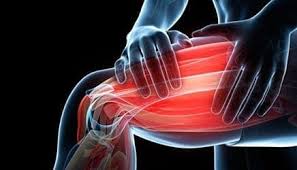Whether you’re hitting the gym in Manhattan, running through Central Park, or training for a weekend sports league in Brooklyn, muscle soreness can put a real damper on your routine. For beginners, it might make you think twice about working out again. For athletes, it can slow down training progress. The good news? With the right prevention strategies, you can keep muscle soreness to a minimum and stay on track with your fitness goals.
In this blog, we’ll break down what muscle soreness is, why it happens, and practical ways to prevent it — whether you’re new to exercise or pushing for peak performance. We’ll also touch on muscle soreness medicine options and tips specific to active New Yorkers.
Understanding Muscle Soreness
Muscle soreness typically refers to the discomfort you feel after unusual or intense physical activity. It’s often caused by tiny tears in muscle fibers, which trigger inflammation and the body’s natural repair process.
There are two main types:
- Acute soreness – felt during or immediately after exercise.
- Delayed Onset Muscle Soreness (DOMS) – usually peaks 24–72 hours after exercise.
For beginners, DOMS can feel especially uncomfortable because your muscles aren’t yet used to the new movements. For experienced athletes, it’s often a sign you’ve pushed your limits — though it shouldn’t be so severe that it prevents training altogether.
Why Muscle Soreness Happens
Muscle soreness is usually linked to:
- Eccentric movements (muscle lengthening under tension, like lowering a weight or running downhill).
- Increased workout intensity or duration.
- New exercises or activities.
- Insufficient warm-up or cool-down routines.
In New York’s active lifestyle, where people walk miles daily, take high-energy group classes, or train outdoors year-round, these factors can add up quickly.
Muscle Soreness Prevention for Beginners
If you’re just starting a workout routine, prevention is key. Here’s how to protect your muscles:
1. Start Slow and Build Gradually
Jumping into high-intensity workouts too soon increases your risk of soreness. Begin with lighter weights, shorter runs, or fewer sets, and progress over time.
2. Warm Up Before Exercise
A 5–10 minute warm-up with light cardio and dynamic stretches helps increase blood flow and prepares muscles for movement.
3. Learn Proper Form
Poor technique can strain muscles and lead to soreness or injury. Consider taking a beginner’s class at a local NYC fitness center or hiring a trainer to guide you.
4. Stay Hydrated
New York summers can be humid, and dehydration makes muscle soreness worse. Drink water before, during, and after workouts.
Muscle Soreness Prevention for Athletes
For seasoned athletes, the goal is to manage soreness without compromising performance.
1. Incorporate Active Recovery
On rest days, do light activities like walking, swimming, or yoga to keep blood flowing and speed up muscle repair.
2. Use Periodization
Rotate training intensity and focus throughout the week. For example, alternate between strength, endurance, and flexibility sessions.
3. Prioritize Nutrition
Post-workout meals should include protein for muscle repair and carbohydrates for energy replenishment. In NYC, this could mean a grilled chicken wrap or a protein smoothie from your favorite café.
4. Cool Down and Stretch
After intense sessions, take 5–10 minutes to cool down and perform static stretches to ease muscle tension.
When Muscle Soreness Medicine Might Help
While most muscle soreness can be managed with rest and natural recovery methods, there are times when muscle soreness medicine can be useful — especially if soreness is interfering with your daily activities.
Options may include:
- Over-the-counter pain relievers (e.g., ibuprofen or acetaminophen).
- Topical creams or gels with menthol or capsaicin for localized relief.
- Prescription medications for severe soreness or underlying conditions.
If you’re in New York, many pharmacies and urgent care centers can provide guidance on safe use. Always consult a healthcare provider before starting new medication, especially if you have other health conditions.
Lifestyle Tips for Preventing Muscle Soreness in New York
Living in a fast-paced city means you may already be on your feet more than most people. Here’s how to adapt your habits:
- Wear supportive shoes if you’re walking long distances or standing for work.
- Break up intense workouts with low-impact activities like cycling along the Hudson River or joining a gentle yoga class.
- Use public spaces wisely — parks and recreation centers often have stretching areas and fitness equipment for warm-ups and cooldowns.
- Listen to your body — if soreness feels more like pain, it’s worth getting checked by a doctor.
Final Thoughts
Muscle soreness is a natural part of getting stronger, but it shouldn’t stop you from staying active. By starting gradually, warming up, staying hydrated, and using smart training techniques, both beginners and athletes can minimize discomfort. If soreness does strike, recovery strategies — and when necessary, muscle soreness medicine — can help you get back on your feet quickly.
Whether you’re training for the New York City Marathon, hitting the gym after work, or just starting your fitness journey, prevention is the key to keeping your muscles healthy and ready for action.

